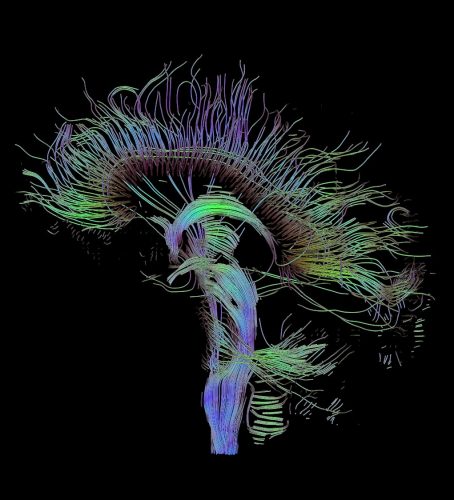Following centuries of curiosity and uncertainty about the human brain, a recent neuroimaging study will provide us with a way to study the live human brain non-invasively. Prior to the advent of neuroimaging, neuroscientists relied solely on post-mortem, or after death, autopsies to gain insight into the workings of the brain. By contrast, neuroimaging employs a variety of techniques to structurally or functionally image the brain without surgical intervention. A multidisciplinary team of Yale researchers has developed connectome-based predictive modeling (CPM), a computational model capable of predicting human behavior based on how one’s brain is wired.
Some commonly used brain imaging techniques include computed tomography (CT) scanning, function magnetic resonance imaging (fMRI), and electroencephalography (EEG). fMRI measures brain activity by detecting changes in oxygenated blood flow through specific areas of the brain. Specifically, the ability to detect these changes by fMRI takes advantage of the difference in the magnetic properties of oxygenated and deoxygenated blood. CPM uses fMRI to observe activity in specific regions of the brain and subsequently derive brain connectivity data for use in predicting an individual’s behavior.
The human connectome is a network of neural connections between different regions of the brain. These connections can be determined by identifying regions with simultaneous activity in the brain. The model developed by Yale researchers can characterize these neural connections more comprehensively by utilizing a connectivity matrix acquired from fMRI data. In a nutshell, each row in this matrix represents one of 300 regions of interest in the brain, and the data within each row describe the functional relationships between this region and the remaining 299 regions. Since humans have unique brain connectivity, and thus unique connectivity matrices, your brain’s functional connectivity can be used to predict various aspects of your behavior. CPM provides a way to extract that information and interpret it in meaningful ways.
The predictive model is constructed by gathering connectivity matrices from many people, and is then used to predict behavioral traits of a new person based on their connectivity matrix. The predictive power of CPM has immense clinical significance. Matrix data can be used to predict and analyze whether an individual has paranoia, delusions, schizophrenic symptoms, and other conditions. Additionally, psychiatric disorders could be more effectively diagnosed with the help of CPM. The current diagnostic protocol for such disorders, the Diagnostic and Statistical Manual of Mental Disorders, Fifth Edition (DSM-5), has been met with mixed results since categorization of patients is based solely on identifiable symptoms. Implementing CPM for diagnostic purposes could allow for more thorough and scientific categorization that could ultimately improve the quality of mental health care.
Although CPM has not yet reached the stage of clinical application, future directions for this research are boundless. According to Professor Todd Constable, senior author of the study, one such direction could include identifying circuits that function aberrantly in certain diseases. Mechanistically understanding these diseases would in turn contribute to the development of more personalized and targeted treatments. “CPM has already been demonstrated to predict one’s fluid intelligence and attentive performance,” said Constable, who believes that many other traits can be similarly predicted. Another question that has yet to be answered is how the brain’s connectivity changes over time with aging and development. In contrast to DNA, our genetic code which is relatively static in comparison, brain connectivity is much more dynamic. This dynamism further challenges our efforts to study the brain.
The novelty of CPM lies in the fact that it is the first whole-brain connectome study of its kind. Up until recently, a major limitation for connectivity research had been an inadequate amount of individual connectome data from which to develop models for predicting complex behaviors. While previously only local brain connectivity could be studied given the amount of data available, the launch of the Human Connectome Project (HCP) in 2009 has supplied a mass of connectome data that allows whole-brain connectivity studies to be done for the first time. HCP is a large-scale effort to collect and share human connectome data in order to address fundamental questions about the functional connectivity of the human brain. To further this goal, the Yale researchers have published an algorithm for implementing CPM to build predictive models. This provides researchers around the world with the tools to contribute to the ongoing study of the human brain using predictive modeling.

